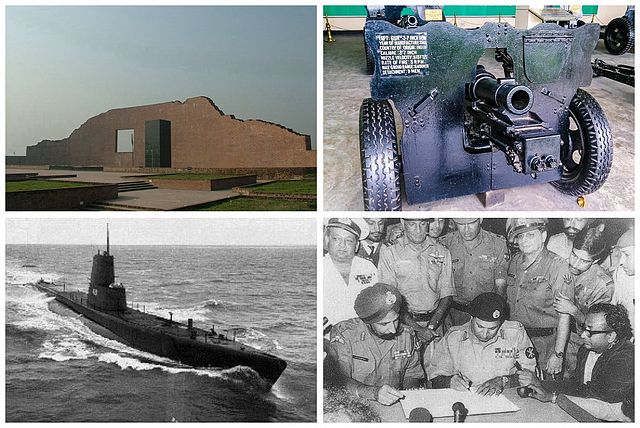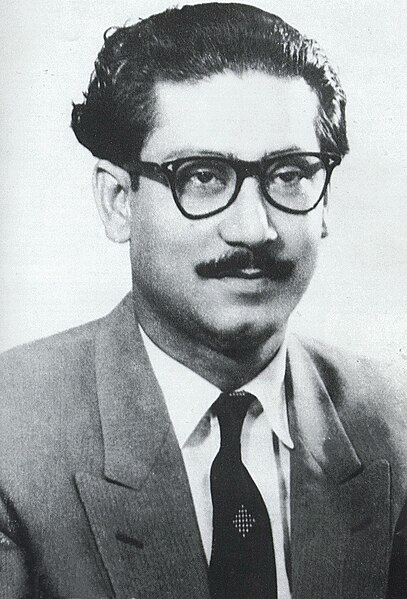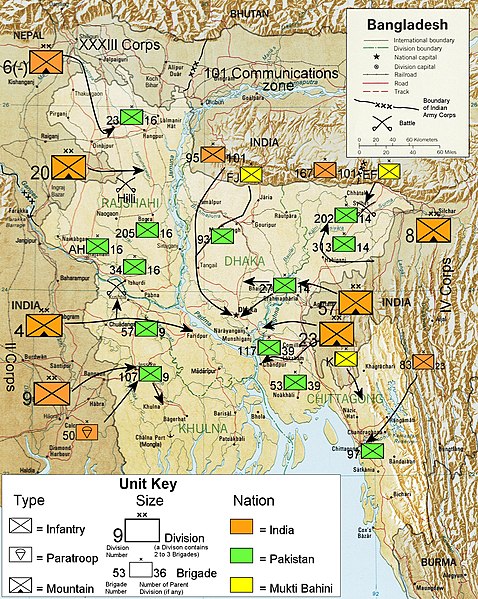The Mukti Bahini, also known as the Bangladesh Forces, was the guerrilla resistance movement consisting of the Bangladeshi military, paramilitary and civilians during the Bangladesh Liberation War that transformed East Pakistan into Bangladesh in 1971. They were initially called the Mukti Fauj.
Italian howitzers used by the Mujib Battery; now preserved at the Bangladesh Military Museum.
Mukti Bahini propaganda posters, one referencing Sheikh Mujibur Rahman's 7 March speech and calling all Bengali Muslims, Christians, Buddhists and Hindus to unite as one nation.
Pakistan's Lt. Gen. A. A. K. Niazi signing the Pakistani Instrument of Surrender in Dhaka on 16 December 1971, in the presence of India's Lt. Gen. Aurora. Standing behind them are various officers from India's Army, Navy and Air Force.
Aparajeyo Bangla (Invincible Bengal) was finished on 16 December 1978 by Syed Abdullah Khalid at University of Dhaka Campus, is a Monument to Mukti Bahini.
Bangladesh Liberation War
The Bangladesh Liberation War, also known as the Bangladesh War of Independence, or simply the Liberation War in Bangladesh, was a revolution and armed conflict sparked by the rise of the Bengali nationalist and self-determination movement in East Pakistan, which resulted in the independence of Bangladesh. The war began when the Pakistani military junta based in West Pakistan—under the orders of Yahya Khan—launched Operation Searchlight against the people of East Pakistan on the night of 25 March 1971, initiating the Bangladesh genocide.
Clockwise from top left: Martyred Intellectuals Memorial; Bangladesh Forces howitzer; Lt. Gen. Amir Niazi signs the Pakistani Instrument of Surrender to Indian forces in the presence of Lt. Gen. Jagjit Singh; and the PNS Ghazi
Language movement memorial
Sheikh Mujibur Rahman, the leader of East Pakistan, and later Bangladesh
Illustration showing military units and troop movements during the war








